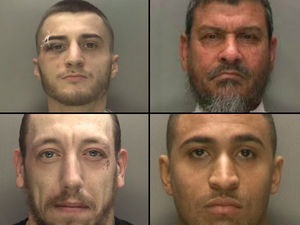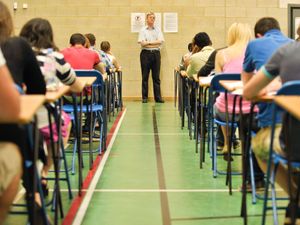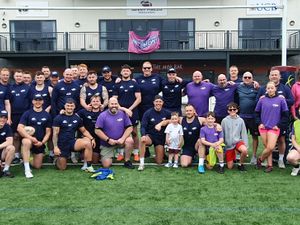Shanay back at Penn home after tornado ordeal
A 12-year-old girl is back home in the Black Country after spending two months in America undergoing gruelling treatment for a brain tumour.

During their time in Oklahoma Shanay Lewis and her family were taken to safety when a deadly tornado struck.
But the youngster took it all in her stride – and is now waiting to see what effect the course of pioneering therapy has had.
Shanay, of Penn, had undergone eight operations on the growth – but it returned.
Doctors are not willing to operate again so the NHS paid for her to receive special proton therapy in the US.
They stayed at a hotel in Quail Springs while Shanay had 33 daily sessions of up to an hour. In between they managed some days out at Oklahoma City Zoo and the Red Earth Festival featuring American Indian artists and dancers.
But the trip took a dramatic turn when the weather worsened and hailstones the size of golfballs began falling from the sky.
At least 24 people were known to have died in the disaster including nine children who were killed as they sheltered in a school.
But Shanay and her mother Samantha and grandmother Sue Bera managed to stay safe in the treatment centre, which has thick lined walls to keep out radiation.
Mrs Bera, who works in advertising, said: "We were out having lunch the first time the tornado came in, and the centre called us and told us not to travel there as it was too dangerous.
"Then a few days later we were at the centre and we were told to stay there because we were protected. There were sirens ringing all over Oklahoma and warnings for people to go to safe areas.
"It was quite scary but Shanay was really brave all the way through."
Shanay, of Pinfold Lane, Penn, collapsed with a seizure at home two years ago.
After being rushed to Wolverhampton's New Cross Hospital, a scan showed up the tumour and she received surgery at Birmingham Children's Hospital. The youngster, a pupil at Highfields School, in Spring Hill, was returning to hospital every three months for an MRI scan – and the latest revealed the tumour was growing back.
The procedure involves a high energy beam of protons rather than high energy X-rays to deliver a dose of radiotherapy to reduce the tumour.
She had to wear a special mask so the beams could be directed to one area of her head, and was strapped to the bed to make sure she kept still.
The treatment made the tumour swell, so she has to wait for it to go down before having an MRI scan to see if it has worked.
Mrs Bera added: "She is quite sleepy now, which they say is normal, so she won't be going back to school until September.
"We were worried about how she would cope but she has been brilliant. She didn't panic and everyone made us feel really welcome there, which helped."
Proton therapy is a type of radiotherapy, where a particle accelerator is used to target a tumour with a beam of protons. The particles damage the DNA of cancerous cells, causing their death or interfering with their ability to proliferate.
The ProCure Proton Therapy Center in Oklahoma City has the most advanced proton therapy technology in the world.





